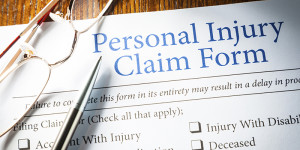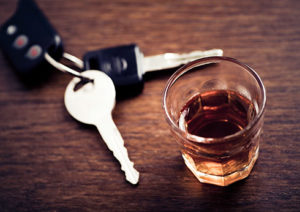Liability Carrier: This is the insurance company representing the at-fault driver. Normally there is only one liability carrier, but there can be several liability insurance carriers that share a part of the fault in hurting the injured client.
UIM Carrier: The UIM carrier is the Underinsured Motorist Coverage Carrier. This insurance company generally insures the uninjured party. Just like the liability insurance carriers, there can be several UIM carriers. This happens when you are hurt in a car not owned or insured by the injured party. Thus, the primary UIM carrier will be the insurance company that insures the car you were in when injured. The secondary UIM carrier will be your own insurance company on the car that may just have been in your driveway at the time of the collision.
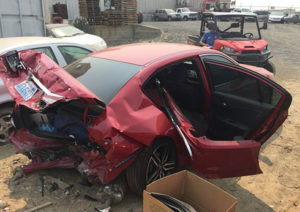

Liability Carriers insure people who rear-end you with their car.
PIP Carrier: “Personal Injury Protection Benefits” are called PIP Benefits. The PIP carrier is generally also the UIM carrier and is part of the insurance benefits attached to the injured party’s own insurance policy. PIP benefits pay medical benefits to at least $3,000 in the state of Utah if the policy is issued out of Utah. The medical pay benefits must be necessarily related to the collision and reasonable medical billing. These are no-fault benefits, meaning that they will be trigger for the injured party’s benefit regardless of whether he was at-fault for the car accident or not. They are triggered so long as you are hurt by the operation or use of motor vehicle in the state of Utah.
PIP benefits also have household services, funeral services and lost wages and generally run for a one year period.
At-Fault Driver: The At-Fault driver is the driver of the car that hurt you and is legally responsible to pay for your damages and injuries. In multiple car pile-ups there can be multiple At-Fault drivers. The At-Fault driver is insured by the Liability Insurance Carrier.
Utah Traffic Code. 41-6A-101 et seq.: The Utah Traffic Code is found at Utah Code Annotated 41-6A-101 et seq. The traffic code is vast and covers the legal duties and obligations of cars operating on Utah roadways along with the legal interactions between cars and bicycles, motorcycles, pedestrians and street legal ATVs to name a few.
The Utah Traffic Code is where personal injury attorneys often look to determine who the at-fault driver is for a car accident.
Insurance Adjuster: An insurance adjuster is a general term for an employee of an insurance company who is tasked with adjusting or adjudicating an insurance dispute. When insurance coverage is triggered, whether it be property damage, bodily injury or Personal Injury Protection benefits, an insurance adjuster is assigned to the claim to bring the dispute to a resolution. There are many types of insurance adjusters who work for insurance companies and their training manuals are vast and filled with a few thousand pages of medical information and negotiation tactics.
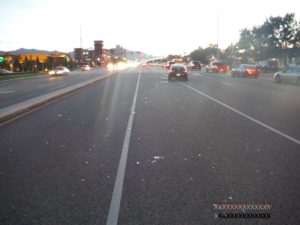

Utah Drunk Driving Cases Cause Serious Injuries.
Coverage Adjuster: Insurance coverage adjusters are less common. Coverage adjusters are assigned to determine whether a particular event has triggered legal coverage under the insurance policy. For example, an insurance adjuster will review whether a death triggered the life insurance policy provisions. Or, whether a car accident is covered under the automobile policy of insurance. Sometimes coverage adjusters are merged with other types of insurance adjusting, it just depends on the insurance company.
Property Damage Adjuster: The property damage (“PD”) insurance adjuster will concentrate on review your car’s damage and determine what it will cost to fix or they will declare the car a total loss. Sometimes the property adjuster will review car damage, other times it may be farm crop damage. It just depends on the type of insurance coverage you have, whether it’s house insurance, car insurance, or horse insurance. Property damage insurance adjusters trained in using expert mechanics, body damage repair facilities and other experts in valuing the property damage loss and how much to pay for it.
Bodily Injury Adjusters: Bodily injury (“BI”) insurance adjusters value the injury to a human being and make attempts to compensate the person for their physical injuries and all the ramifications that flow from that physical injury. Adjusting bodily injuries is a complex task taking into consideration numerous factors such as:
(1). The likeability of the injured party. How well they will present in front of the jury.
(2). The likeability of the at-fault party. How well will the at-fault party will present in front of a jury.
(3). The degree of permanency of the physical injuries to the injured party.
(4). The past and future medical costs that have been incurred by the injured party or will be incurred by the injured party.
(5). This is a nonexclusive list.
The purpose of PIP:
(1) Pay your medical expenses that are related to your car crash,
(2) Help pay for lost wages and time off work,
(3) Help pay for in-home services,
(4) Funeral, burial, or cremation benefits not to exceed a total of $1,500 per person; and
(5) Compensation in the event of the death of a person, payable to the person’s heirs, in the total sum of $3,000. That is it.
Wage Loss: Wage loss for back lost wages is where you were hurt and you lost working hours and money due to the Utah car collision. Past, or back lost wages are different from future impairment of your capacity to work. Future lost wages are calculated over your working life.
If the injured party is hourly, then you take the hours missed times the injured party’s hourly rate to find the amount of past lost wages.
If the injured party is commission-based, the calculation is harder, but not impossible. In commission- based past lost wage cases, you can use several past years as examples of how much money was lost in the current year as representative incomes.
Future Impaired Capacity to Work: Sometimes when you are hurt you cannot do the work you were used to doing, you may need to money from your verdict or settlement to retool your workplace skills. Or, you may never be able to obtain a job that paid as well as you were used to prior to the collision. Therefore, you have lost a stream of income over your working life. This lost future income stream can be captured by an economist and vocational rehabilitationist.


Provo Utah Boat Accident Attorney
Special Damages: Specials damages are generally calculateable and commonly encompass medical bills, mileage, lost wages, future lost wage, future impaired capacity to work, property damage, etc.
Mileage. Every time you go to the chiropractor or physical therapist, you should log your mileage for reimbursement later. Generally, mileage is paid at the IRS rate.
General Damages: Juries, judges and arbiters are asked to grant general damages to injured people. General damages make up for what was taken and provide compensation to injured individuals. General damages are often the most important compensating factor in personal injury cases because these types of damages fix, help and make up for what was taken and can never be replaced
Dramshop Liability: In addition to the punitive damages in a Utah DUI car collision car, Dram Shop Liability can attach to person who furnished the alcohol to the DUI driver that caused the injuries. Dramshop liability is a complex statute found at Utah Code Ann 32B-15-201 and any Utah personal injury attorney must carefully analyze the injury case for any possible cause of action.


Using a Utah personal injury will help you navigate the complex world of insurance law.
78B-8-201. Basis for punitive damages awards — Section inapplicable to DUI cases or providing illegal controlled substances — Division of award with state.
(1) (a) Except as otherwise provided by statute, punitive damages may be awarded only if compensatory or general damages are awarded and it is established by clear and convincing evidence that the acts or omissions of the tortfeasor are the result of willful and malicious or intentionally fraudulent conduct, or conduct that manifests a knowing and reckless indifference toward, and a disregard of, the rights of others.
(b) The limitations, standards of evidence, and standards of conduct of Subsection (1)(a) do not apply to any claim for punitive damages arising out of the tortfeasor’s:
(i) Operation of a motor vehicle or motorboat while voluntarily intoxicated or under the influence of any drug or combination of alcohol and drugs as prohibited by Section 41-6a-502;
Governmental Immunity Act: The Utah Governmental Immunity Act creates special provisions for suing the Utah State Government when it actors or employees hurt someone through their negligence. The Governmental Immunity Act is current found at Utah Code Ann. 63G-7-402 (2017).
There are special notice provisions and shortened statute of limitations provisions regarding negligence claims against the State of Utah.
Brain Injury: A serious injury to the head by direct impact or whipping of the head. Brain injuries can be mildly traumatic or serious skull fractures. All brain injuries can affect the brain function and should be taken very seriously with appropriate medical treatment.
Orthopedic Surgeon: Personal injury attorneys commonly interact and hire Orthopedic surgeons to evaluate their client’s injuries and provide a future medical prognosis. An orthopedic surgeon is a medical doctor and surgeon who diagnoses and treats people before and after surgery regarding their muscles and bones. Orthopedic surgeons conduct spine fusions, disc removals and work on knees, shoulders, hands and elbows to name a few. Orthopedic surgeons are medical doctors have extensive medical training past undergraduate and medical school to include internship, residencies, and fellowships.
Their medical degree is a Doctor of Medicine (MD).
Physical Therapist: Physical therapists (“PT”) have advanced education, past undergraduate, who are generally licensed through their home state agency. PTs help patients in nonsurgical manners through exercise, stretching, mobility work and a host of other modalities that are generally less invasive then surgery. Their degree is either a Doctor of Physical Therapy (DPT) or a Physical Therapist (PT).
Chiropractic Physicians: Chiropractors commonly help people injured in Utah car accidents. They specialize in spine health. They have four years of advanced education past undergraduate and are licensed medical professionals through their home state. Chiropractors obtain a Doctor of Chiropractic (DC). Some medical professionals consider chiropractors a form of alternative medicine.
Physiatrist: A physiatrist is a medical doctor (MD) that specializes in physical medical and rehabilitation that includes musculoskeletal system treatments which do not include surgical treatments.
Neuropsychologist: In the personal injury context, a Neuropsychologist is a nonmedical doctor who has a Ph.D. in psychology and assists in diagnosing brain injuries in people who are hurt.
Utah State Car Insurance Minimums: As of 09/2017 in the State of Utah, if you drive a car, you must have car insurance in the following minimum amounts:
The Utah State legal minimum amount of automobile insurance coverage is $25,000/$65,000/$15,000.
This means if you are hurt in a Utah car accident by someone else and they have the Utah State minimum car insurance you would be able to recover $25,000 from the at-fault driver’s insurance. A maximum of $65,000 will be paid out by the at-fault driver’s insurance if there are multiple people in the car.
The state minimum for property damage is $15,000. This means that if you are hit by someone else the most the at-fault driver’s insurance will pay is $15,000 for fixing your car.
Accident Reconstructionist: Accident reconstructionists are used to determine who is at-fault for a Utah motor vehicle collision. Often the insurance defense attorney will hire their own reconstructionists and so will the plaintiff’s attorneys and you will incur the battle of the experts.
Often these experts are former police investigators that have retired and garnered most of their experience in the police career.
Aggravated Liability: Aggravated liability in a Utah car accident involves situations where there are DUI, texting or completely reckless conduct that so significantly endangers the public that extra value is given to the compensation in the case.
Comparative Fault: Comparative fault is based in the Utah Code at Utah Code Ann. 78B-8-817. Comparative fault is where the fact finder determines the percentages of fault amongst the parties. The factfinder can be the jury or it can be the judge in a bench trial where no jury sits. In Utah, if the injured party is greater than 51% at-fault, then the injury party cannot recover. Utah is a 51 percent state, meaning that if the plaintiff injured party is greater than 51 percent at fault, they cannot recover special and general damages.
For example, when a jury verdict issues a $100,000 money verdict, the jury verdict form will have a place where the jury can apportion fault between the parties. They jury or factfinder can find that the plaintiff has 10 percent fault in the intersection collision and the defendant wrongdoer is 90 percent at fault. Thus, the original $100,000 money verdict will be reduced by 10 percent to reflect the fault and poor choices of the plaintiff injured party.
Rear End Collision: A rear end collision rarely is the plaintiff injured party at fault for the car collision. Occasionally, the insurance defense attorneys will try to argue that you were erratic in your driving and try to apportion some fault to you. Placing fault on the driver of the car that was rear-ended is very difficult to do.
Intersection Car Collision: An intersection car collision has many more opportunities for fault to be apportioned to the plaintiff injured party. Often the injured party should have kept a better look-out. Or, they should have had their foot on the brake as they entered the intersection as a best safe practice. Other areas where fault can be placed on the plaintiff injured driver is that he entered the intersection on Yellow Light, which is legal, but not as safe as just stopping and waiting for the next light cycle.
Passenger Car Accident Claims: A passenger claim is where the driver of your car that you are a passenger in collides with other cars, or rolls the car over. There are many ways the driver can crash the car that injures you. Passenger claims have very little chance of asserting fault against the innocent passenger in the car that was involved in the car accident. Often there will be a two or more car collision pile-up and therefore, comparative fault between the several car drivers will be in play.
Inter Family Car Accident Arbitration: Often families are traveling in the same car together and there is a collision where Dad made a driving error causing other family members in the car injuries. Inter Family car accident arbitration allows a private arbitrator to decide the fault and damages in the car accident and trigger liability car accident insurance proceeds for the injured people.
Utah Code Ann. 31A-3-303 (2017) is where you can find the Inter Family Arbitrations provisions applicable to situations where you are hurt in a car accident and the driver is a family member.
Arbitration: Arbitration is where you rent a retired judge for a day or hire another experienced attorney to hear the evidence in an informal manner and make a timely ruling. Arbitration is very informal a saves enormous amounts of costs for exerts witnesses and time to try lawsuits to a jury.
There are many Utah statutory bases for personal injury arbitration. There is also dog bite arbitration in the Utah Code in Title 18.
For Utah car accidents, there is a specific provision for arbitration in Utah Code Ann. 31A-22-321 (2017). Under the Utah and United States Constitutions, all arbitrations requires a trial de novo opportunity for a party to select a jury trial and do the trial all over again.
Causation: Causation is a legal term that means “did the wrongful conduct cause the plaintiff to be injured?” Only wrongful conduct that causes an injury is compensable under Utah law. The car accident, for example, must cause the other person’s injuries.
Negligence: Negligence is where a person in society acts in a way that is below the standard of care for that particular act. In other words they acted in a reckless and careless way that endangers the public, causing damages to a person.
Mileage: Mileage to and from your medical providers is an aspect of special damages. Mileage is generally measured at the Internal Revenue Service medical rate, which varies, but is around 20 cents per mile as of 2017.
Boating Accident: Utah Lake, the Great Salt Lake and many more of Utah’s lakes require boats to have liability insurance just like cars must have on Utah’s roadways. The same sets of negligence laws applies to boating accidents that applies to Utah car accidents. Boating collisions, rollovers, sinking, and drowning, etc, can trigger the boat owner’s liability insurance.


Boats have insurance to cover accidents that happen
Homeowners’ Insurance: Most every home with a mortgage on it will have mandatory homeowners’ insurance covering the home for injury, death, damage and destruction.
Homeowners policies of insurance will cover dog bites, slip and falls and injuries that are legally compensable that occur on the homeowner’s land. Often homeowner’s policy of insurance will cover dog bites that do not occur on the homeowner’s land, but in the adjacent park or while the dog is in the back of your truck.
Just like Utah car policies of insurance, homeowner’s policies will oftentimes have medical pay benefits attached to the policies that are no-fault medical pay benefits when someone is hurt on the premises.
Workers Compensation System: When you are hurt while on the job, you will be utilizing the Workers Compensation System. You still may have a personal injury claim even when hurt on the job, if you are hurt by a non-fellow employee. Police officers and delivery businesses will often be on the job, but will be hurt by another car while on the road. In these circumstances, the injured worker will have a personal injury claim and a possible Workers Compensation claim.
Utah Motorcycle Insurance: In Utah, motorcycles are required to have liability insurance and property damage insurance, but they are not required to have Personal Injury Protection benefits. When purchasing motorcycle insurance you should always have large amounts of medical pay benefits. You should purchase at least $10,000 or more of medical pay benefits if you ride a motorcycle.
Dog Bite Claim: Utah Code Ann 18-1-1 is the governing statutory law governing Utah dog attacks. Utah does not require an actual bite to incur medical bills and general damages in a dog attack case Utah has a strict liability dog bite statute. Meaning, you don’t have to prove fault to recover money damages from the dog owner. Most of the time, a dog bite is covered by the dog owner’s homeowners insurance.
Sometimes, a homeowners’ policy of insurance will expressly exclude certain types of dog breeds from coverage under the policy of insurance. Your personal injury attorney will need tzoobtain and read the policy and determine where coverage exists for all or some dog breeds under the insurance policy.


Discovery: Discovery occurs when a lawsuit for personal injuries is filed with the courts. Discovery only occurs in the District Court and not in the Utah Small Claims Court. Discovery is governed by the Utah Rules of Civil Procedure and can be found at www.utcourts.gov. Specifically, there are the following common discovery methods that occur in a Utah car accident lawsuit.
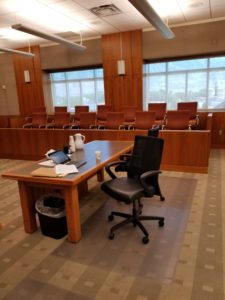

Jury Trial
(1). Expert Witness Disclosures. The parties must automatically disclose who their expert witnesses are going to be at trial.
(2). Initial Disclosures. Automatically, the parties to a Utah car accident personal injury case must disclose all known witnesses, all evidence in their possession and describe their injuries and any possible past injuries. Any documents, evidence or witnesses not disclosed, that party not disclosing them will not be able to use them at any subsequent trial or in motions.
(3). Interrogatories: Interrogatories are written questions to the opposing party of the lawsuit. They can only be sent to parties to a lawsuit, they cannot be sent to non-parties. The other side on the lawsuit must answer these written questions under oath within 28 days.
(4). Request for Admission. Request for admission are simply questions sent to the other party that requires them to admit that the fact is true, or deny that the fact is true. If a party denies a request for admission and subsequently that fact is proven, a court may award the proving party attorney’s fees for having to prove up the denial.
(5). Inspection of Land and Things. You can motion the court or agree with the other side to inspect any land or other items materials to the personal injury case.
(6). Subpoenas. Subpoenas, unlike most other types of discovery, can be sent to third parties were are not part of the litigation. Subpoenas are commonly used for obtaining medical records, police reports, medical billings, MRIs, X-rays, and other business records.
Social Media: Social media is ever changing in our digital age. But, what will always be true is that the opposing party in a personal injury case may be monitoring your social media activities for evidence against you in the courtroom. You should be thoughtful about your social media activities so that they do not become misconstrued.
Insurance Adjuster Interview: An insurance adjuster interview is where an insurance company’s employee (adjuster) calls you and asks for a recorded interview. This employee could be a property damage adjuster or a bodily injury adjuster. These adjusters could be from the opposing at-fault insurance company, or they could be from your own insurance company that insured your car at the time of the collision.
You have no duty to cooperate with the at-fault driver’s insurance company and participate in an insurance adjuster interview. You do have a contractual obligation to cooperate with your own insurance company and participate in an adjuster interview. You do not have to immediately conduct an adjuster interview, even with your own company, if you are so severely hurt that the timing is not appropriate. You will do an interview, but you can wait until a better time when you are recovered a bit.
Insurance adjuster interviews can be a second “bite” at a deposition. Meaning if a lawsuit is filed, or the matter goes to court, they may use every word you said in your insurance adjuster interview against you. Yet, there are times when you would want to give an insurance adjuster interview to the at-fault carrier. Speeding up the claims adjudication process is one of them.
Contingency Fee Agreements: A contingency fee is where the lawyer only gets paid if the client receives compensation. Personal injury cases use contingency fees, but other types of litigation also use contingency fees. Further, the attorney only gets paid at the end of the case (if they win), which can take years sometimes. The average turn cycle on many PI cases is 6-8 months. A turn cycle means start to finish of a personal injury case. It is like working for Ford Motor Company, but only getting paid every six months to a year, instead of biweekly. This long turn cycle is one reason why the personal injury attorney requests a 33-40 percent contingency fee. Another reason for the percentage fee is because the risk of losing will leave the attorney without any payment for his year-long services.
Personal Injury Jury Demand: Jury demands are as old as the Greeks and have been an American institution against tyranny and powerful interests since before the American Revolution.
Here is the composition and agreement requirements for Utah juries.
78B-1-104. Jury composition.
(1) A trial jury consists of:
(a) 12 persons in a capital case;
(b) eight persons in a noncapital first degree felony aggravated murder or other criminal case which carries a term of incarceration of more than one year as a possible sentence for the most serious offense charged;
(c) six persons in a criminal case which carries a term of incarceration of more than six months but not more than one year as a possible sentence for the most serious offense charged;
(d) four persons in a criminal case which carries a term of incarceration of six months or less as a possible sentence for the most serious offense charged; and
(e) eight persons in a civil case at law except that the jury shall be four persons in a civil case for damages of less than $20,000, exclusive of costs, interest, and attorney fees.
(2) Except in the trial of a capital felony, the parties may stipulate upon the record to a jury of a lesser number than established by this section.
(3)
(a) The verdict in a criminal case shall be unanimous.
(b) The verdict in a civil case shall be by not less than three-fourths of the jurors.
(4) There is no jury in the trial of small claims cases.
(5) There is no jury in the adjudication of a minor charged with what would constitute a crime if committed by an adult
LONG LIVE THE TRIAL BY A JURY!
Personal Injury Lien: A lien is a legal term that describes a debt being secured by property. Whether a house mortgage or in the case of personal injury cases, the settlement proceeds. Secured debts are like your mortgage or a car note. If you do not pay, they foreclose on your house or repossess your car.
There are numerous types of personal injury liens applicable to Utah personal injury cases. Each personal injury case is different, but for sure the personal injury attorney must keep accurate and timely track of all liens. Failure to pay liens can get the attorney sued, the client sued and the law firm sued for collection of the lien proceeds.
Personal Injury Hospital Lien: A Utah hospital lien in a personal injury case is created by statute at Utah Code Ann. 38-7-1 et seq. Hospital liens are created when the injured party goes to the hospital and incurs medical services and does not have private health care insurance cover the medical expenses. Thereafter the hospital will file an affidavit with the local District Court containing a ledger of medical services and the grand total amount of the personal injury hospital lien. The personal injury attorney and his staff will search the public databases for legal filings regarding a possible hospital lien, note it and then pay it when the settlement proceeds come in.
Personal Injury Funder Liens: Money funding liens are where third party financial lenders loan money in advance to injury people who have valid and active personal injury claims. These funding lien holders place the injured party’s attorney on written notice and advance the money to the injured party with the repayment being secured and attached to any prospective settlement proceeds.
These loans are generally small, and are generally only a last-ditch effort for an injured party to get, or keep themselves afloat while their injury case settles. These loans are not cheap and have high interest. Additionally too many of these loan can hamper and make cases hard to settle.
Personal Injury Medical Lien. These liens are consensual liens created by the contracting parties, i.e. the medical provider and the injured patient. These liens do not have to occur. Instead, it is by the agreement of the parties.
Common medical liens are chiropractic or physical therapy liens whereby these medical providers agree to provide the patient continued medical care, but will not get paid until the end of the case. Medical liens are the most common types of liens in personal injury cases.
Personal Injury Private Health Care Insurance Liens. It is ironic that you pay so much for private health care insurance with premiums and deductibles, only to have the insurance carrier want every dollar back that it paid for medical bills due to the fault of a third party.
Private health care liens are where Select Health, Blue Cross or other carriers pay for medical care that was caused by a third party’s negligence. If you are hurt by someone else’s fault, you incur medical bills because of it, and your private health care insurance carrier pays for it. They will want every dollar back that they paid because of the third party’s negligence. This reimbursement becomes a lien on your personal injury proceeds which you attorney must recognize and pay. If your personal injury attorney is not keeping track of your liens, you could be stuck with a lot of bills at the end of the day.
Medicaid Liens. Medicaid liens are created by federal and state law. If you sign up for Medicaid or use Medicaid, you will pay back Medicaid any monies it spent on your medical care that was caused by an at-fault party. It works very similar to private health insurance liens, except in Utah they generally automatically reduce the lien by 1/3 to reflect the attorney’s collection efforts that ultimately benefit the Medicaid program.
Utah Small Claims: Utah Small Claims Court has a jurisdictional limits of not greater than $10,000 plus interest and costs. As of 2017, there is now a jury demand that can be waged in Small Claims court essentially killing all small personal injury cases that used to be brought in Small Claims. The venue, or place to file Small Claims is the court location where the car accident occurred, or where the defendant at-fault driver lives. The filing fee is up to $185. In Utah’s Small Claims Court the only remedy is an award of money. It is impossible for a judge to order a party to give back property or do anything else except pay money to the opposing party.
Utah District Court: District Courts in Utah handle all civil matters that are not filed in Small Claims Court and handle all Class A Misdemeanors and above in criminal cases. The filing fee varies, but for personal injury cases it is currently $360 (2017).
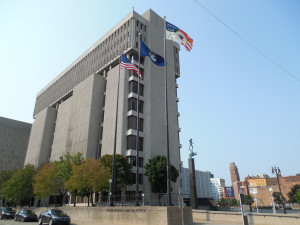

Keys to the Courthouse.
Utah Justice Court: Utah Justice Court’s only handle Class B Misdemeanors and below. Utah’s Small Claims Courts are housed in the Justice Courts, but are separate courts with separate functions.
Medicare Liens: Medicare liens are also created by federal law. They work very similar to Medicaid liens, except when dealing with Medicare you had better pack a lunch and probably dinner also just to talk to a real person to find out what your lien balance is. They are very hard to deal with and it can take months to resolve a Medicare lien.
Cross-Examination: Cross examination is where the opposing attorney has the opportunity to ask the witness leading questions in attempts to find the truth. Cross-examination is considered the greatest engine for truth finding ever created in a court of law. Cross-examination is a very difficult skill to master, or even become good at because it is so often conducted in our modern day courts where cases are not tried very often. Good examples of cross-examination can be seen on YouTube with a quick search for F. Lee Bailey, Gerry Spence or Johnnie Cochran.
Bodily Injury Insurance Claims: Bodily injury (“BI”) insurance claims are where physical injury occurs due to the negligence of a third party or business. When a BI claims accrues, a BI insurance adjuster is assigned to review the medical records and the claim and place a monetary value on the case with attempts to settle it prior to a lawsuit being filed.
Property Damage Insurance Claims: Property Damage (“PD”) insurance claims arise in many different circumstances. Most commonly when your car is damage in a Utah car accident, a PD claim will arise. But PD claims also arise when your car hits a building causing damage after it was hit by the at-fault driver. Hitting multiple cars in one collision can cause multiple PD claims, along with hitting signs or destroying fences. PD claims also have stranger venues, such as hurricane home destruction, or crop damage due to early frost.
Utah Insurance Department: The Utah Insurance Department is an insurance regulatory agency which is designed to protect insurance policyholders and to serve the greater public interest through the effective regulation of the Utah insurance marketplace.
Personal Injury Attorney: A personal injury attorney or lawyer is an attorney who helps people who are injured through the fault of others. These injuries can occur in boating accidents, car accidents, wrongful deaths, ATV accidents, motorcycle accidents, passengers on motorcycles or cars, moped accidents, pedestrian knockdowns, dog bites or slip and falls via dangerous conditions on the land.
Personal injury attorneys should be trial lawyers, meaning they are trained and capable in the courtroom, with a jury or with a judge. Not all personal injury attorneys have these trial lawyer skills and caution should be taken when selecting your personal injury attorney.
Trial Lawyer: A trial lawyer is an attorney who goes to the courtroom for a living. A trial lawyer is well versed in cross-examination, handling expert witnesses at trial, case preparation and eventual presentation and advocacy in front of a jury. Contrasted to an office practitioner, or non-trial lawyer, the office practitioner drafts documents, conducts business closing, draft wills, and generally advises clients in a no- litigation setting.
GAP Insurance Coverage:
QUESTION: What is “GAP” Coverage for My Car?
ANSWER: “GAP” stands for Guaranteed Auto Protection Insurance Policy. What it does is make up the difference between what you owe the bank on the car and what the car is actually worth. For example, if you owe the bank $10,000 on the car loan, but your car is only worth $7,000, then your GAP insurance would pay the bank the difference in the event your car is totaled and the insurance company only gives you $7,000. It pays the $3,000 difference between the fair market value of your car, versus what you owe the bank on it.
Open and Obvious Doctrine: In short, the “Open and Obvious” doctrine is an insurance defense tactic arguing to the jury that the injured party caused their own injuries because the injured person should have seen the hazardous condition on the land. For example, if there is a log in the middle of the sidewalk and you trip over it, causing injuries, the insurance defense attorneys will argue that you should have seen the log and avoided the log. The same Open and Obvious doctrine arguments apply to ice and snow where an alternative path could have been taken. The Open and Obvious doctrine is rooted in personal responsibility for your own action.
Boat Insurance: Most boats owed in Utah are required to have liability insurance just like cars do that are on Utah roadways. If you are injured in a boating accident there will often be insurance coverage to help you with our injuries that were caused by the negligence of others.
Rental Car Coverage: When you are injured in a Utah car accident and your car is totaled or in the repair shop often you will need a rental car. Rental cars can be given voluntarily by the at-fault driver’s insurance company, or you may have car rental insurance coverage under your own Utah car insurance policy. Generally rental car coverage is for a short period and you will often be cut off early, or provided with car that does not suit your needs.
Hit-and-Run Car Accidents: A hit-and-run Utah car accident occurs when the offending party hits your car and drives away, or hits your car and refuses to call the police or exchange car insurance information. Either way you will be left with the task of tracking down the at-fault driver and finding who his insurance carrier is. The irresponsible driver like this is one reason to always call the police after a car collision to accurately and timely document a car accident in the even you need compensation for your physical injuries or property damage injuries.
These are examples where your own car insurance should kick in to provide Uninsured Motorist Coverage.
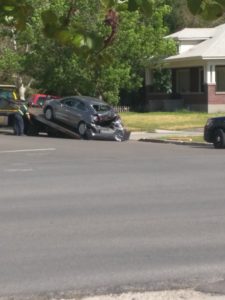

If you are in a Provo Car Accident, hiring a personal injury will save you time and money and provide for better results.
Phantom Drivers: A Phantom driver occurs when they hit you, or they drop stuff out of their car on the interstate, causing your injuries. Examples are where payload items are dropped out of trucks causing you to swerve and roll. Other examples are items on the roadway that are flicked up by traffic beside you or in front of you causing your car or motorcycle to serve out of control.
These are examples where your own car insurance should kick in to provide Uninsured Motorist Coverage.
Uninsured Driver: An uninsured driver is someone who is driving on Utah’s roadways with a car that does not have valid car insurance as required by Utah law. When they hit you and cause you injuries you can reach out to your own insurance company to provide coverage with Uninsured Motorist Coverage.

